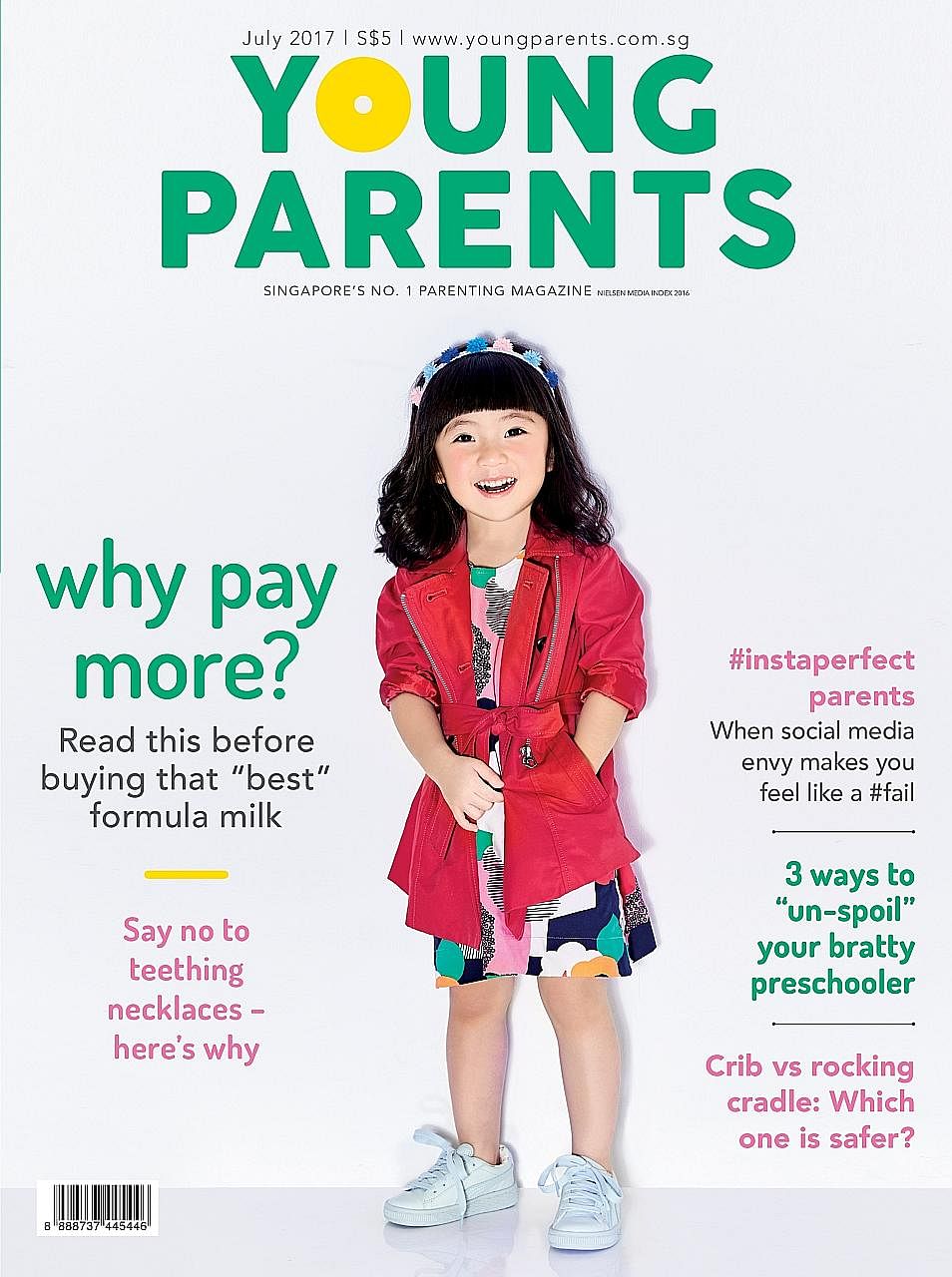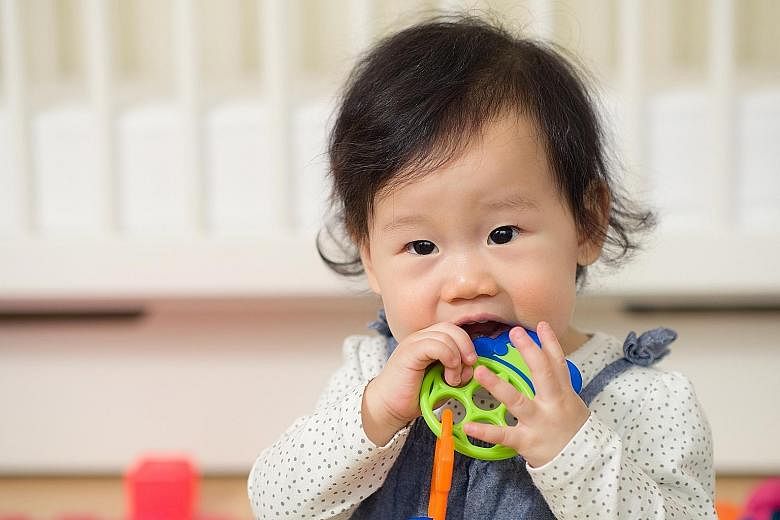Your baby's first tooth may make a nondescript debut or a grand entrance, complete with drooling, tears and all-day fussiness. Here are seven things you should know about teething.
1 FIRST TOOTH: ABOUT SIX MONTHS
Most babies will cut their first tooth between six and 10 months, said Dr Natalie Epton, a specialist paediatrician and neonatologist at SBCC Mount Elizabeth Novena Hospital.
Others may get theirs around or after their first birthday.
Some babies may even be born with a tooth, said Dr Chang Fu-Gui, a dental surgeon from The Dental Studio.
Expect the two lower front teeth to come out first, followed by the two upper front teeth. When a child is two to 2½ years old, she will have a full set of 20 teeth, he added.
2 CRYING, RASHES, LOOSE STOOLS
Little teeth erupting through the gums may cause pain and discomfort, so your baby may be cranky and cry more than usual, Dr Epton said.
Watch for sore gums. If your baby is breastfeeding, she may refuse to latch on or nurse properly because of the discomfort, Dr Chang said.
She may also chew on her fingers and toys, and drool a lot, which can cause skin rashes on the chin.
When swallowed, the excessive saliva can cause loose stools, which may lead to a diaper rash, said Dr Epton.
Three to four episodes of loose stools a day is considered "mild". See a doctor if your baby is experiencing frequent and large amounts of watery stools, she added.
But not all babies experience teething the same way. "Some may have no overt signs of teething and the eruption of their first tooth may come as a shock," Dr Epton said.
3 DOES TEETHING CAUSE FEVER?
Doctors are still divided on whether teething causes fever.
Some believe there is a chance that inflammation around the gums may produce a low-grade fever of 38 deg C to 38.5 deg C in babies, Dr Epton said.
See a doctor if your baby's fever is over 38.5 deg C as it could indicate something more serious.
"Your baby might have picked up an infection from chewing toys and other objects that she has been putting in her mouth," she added.
4 INTRODUCE TEETHING TOYS
One of the most effective ways to relieve discomfort is to let your baby chew on teething toys.
Chill the toys in the fridge but do not freeze them as extreme temperatures can damage the gel in them, Dr Epton said.
You can easily make one too. Just put a chilled and wet facecloth in a Ziploc bag. The coldness can help numb the gums and provide temporary relief, she added.
5 HOLD OFF NUMBING GELS AND TEETHING NECKLACES
While you can find topical numbing gels and creams to ease sore gums at pharmacies, Dr Epton does not encourage using them.
"They make it difficult for your baby to swallow her saliva. This may increase the risk of gagging or choking," she said.
Do not rub alcohol on the gums either. The United States Food and Drug Administration (FDA) warned that this can put babies and children under the age of two at risk of lower oxygen levels in the blood.
The FDA also cautioned against using herbal or homeopathic teething gels which may contain ingredients such as belladonna, which can cause breathing difficulties, drowsiness and seizures.
Some advocates claim that amber teething necklaces can help release pain-relieving substances and boost the immune system, but there are no scientific studies to back up these claims.
Most paediatricians, as well as the American Academy of Paediatrics, do not recommend using them. "These necklaces may present a strangling risk if they get caught or entangled," said Dr Epton.
6 START GOOD ORAL HYGIENE BEFORE BABY HAS FIRST TOOTH
Get your baby used to cleaning her gums even before she cuts her first tooth. Use a moist soft cloth or a clean gauze-pad to wipe her gums daily, Dr Chang said.
Once her teeth emerge, you can use a finger brush or a toothbrush for babies. Use a very small amount of fluoride-free toothpaste to clean her teeth when she is about nine to 12 months old.
When she knows how to spit and rinse her mouth, you can start using a child-friendly toothpaste with reduced fluoride.
Be sure to brush your toddler's teeth twice a day and floss a few times a week. To make tooth- brushing sessions easier and fun, Dr Chang suggested using a child- sized electric toothbrush.

7 TIME TO SEE DENTIST
Although baby's milk teeth are not permanent, it is still important to care for them. Cavities in baby teeth can spread faster than in adult teeth. Dr Chang recommends scheduling your baby's first dental appointment when the first tooth appears.
"Although most kids this age will not be cooperative, that first dental visit is important to introduce your child to a dental environment. Make it a family day, with mummy, daddy or the siblings going for their dental check-up too," he added.
•This article first appeared in Young Parents magazine. Young Parents, published by SPH Magazines, is available in digital and print formats. Go to www.youngparents.com.sg to subscribe and for more stories.

